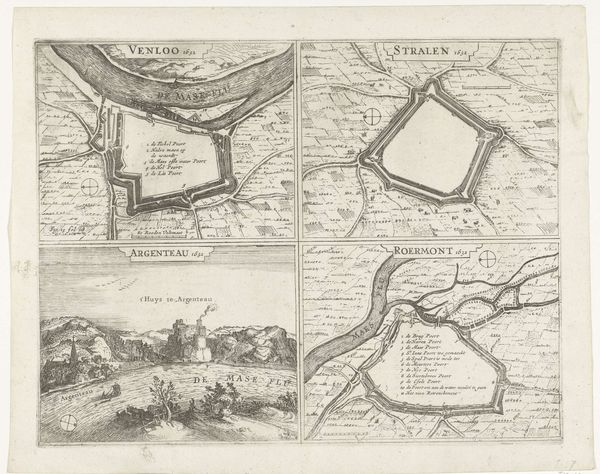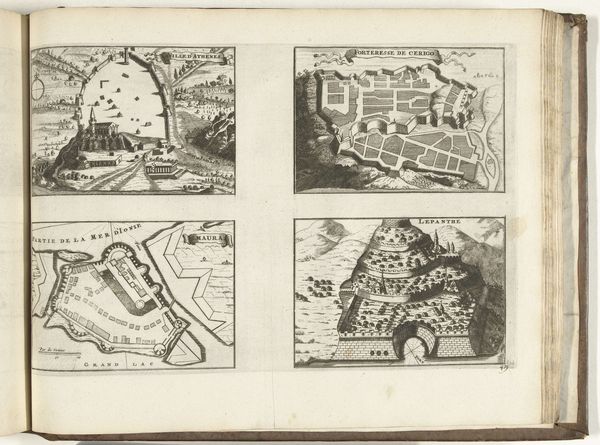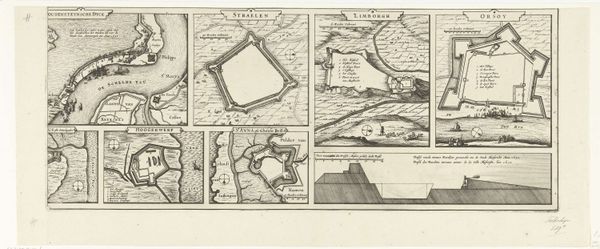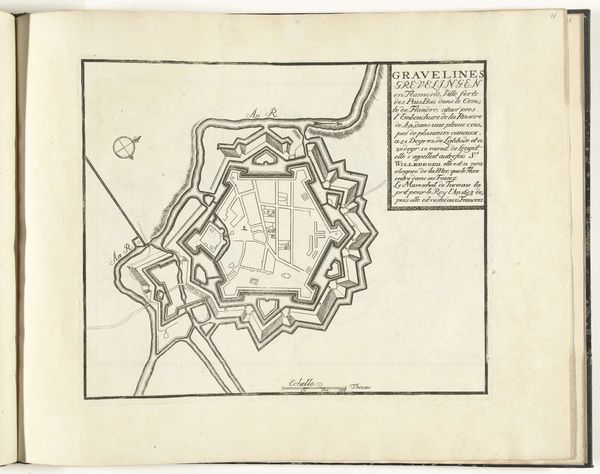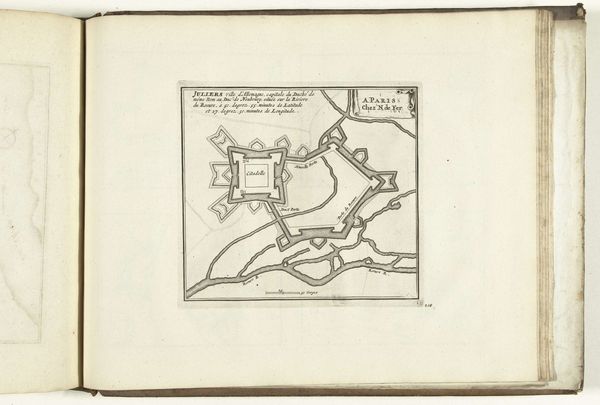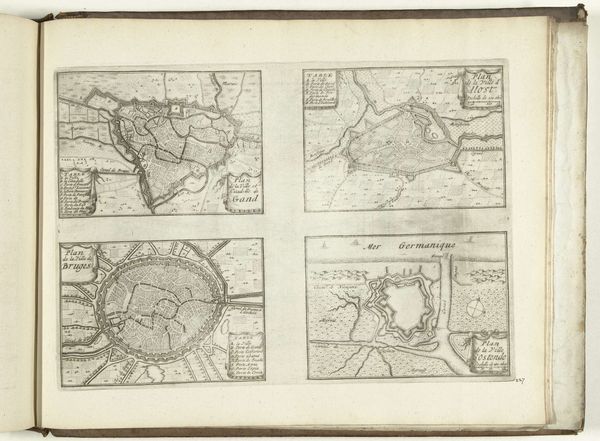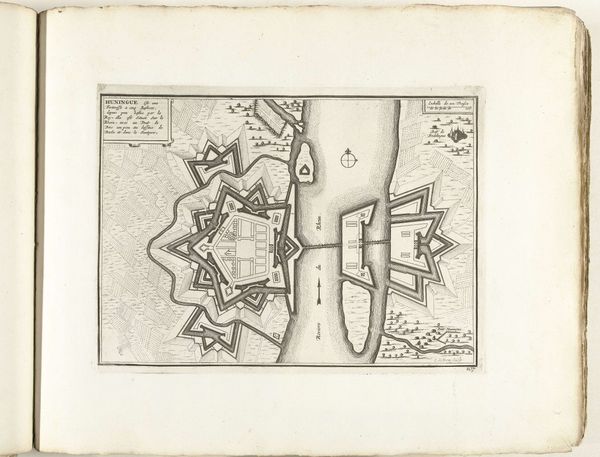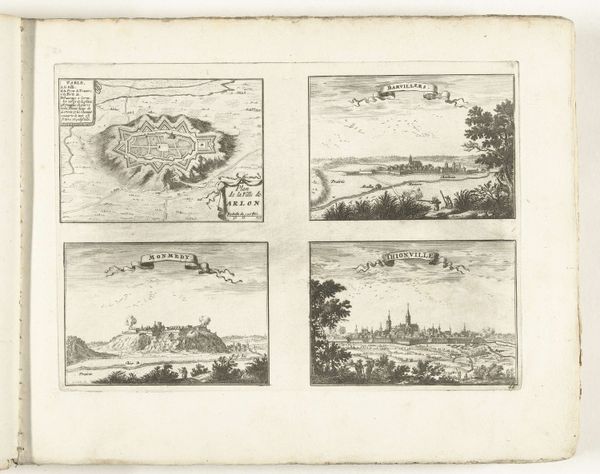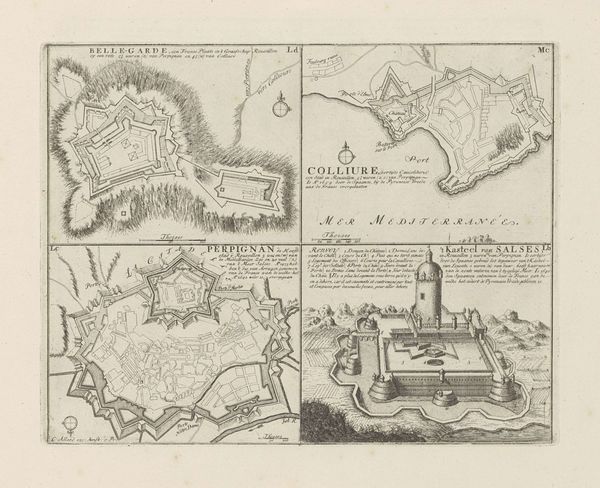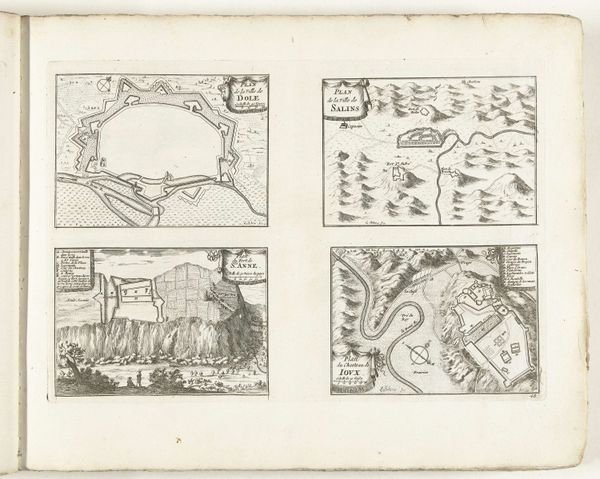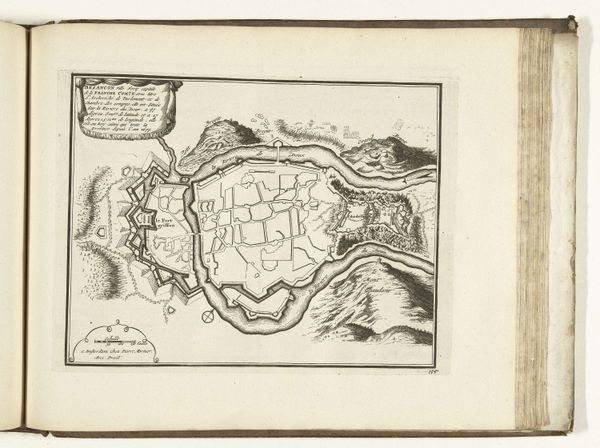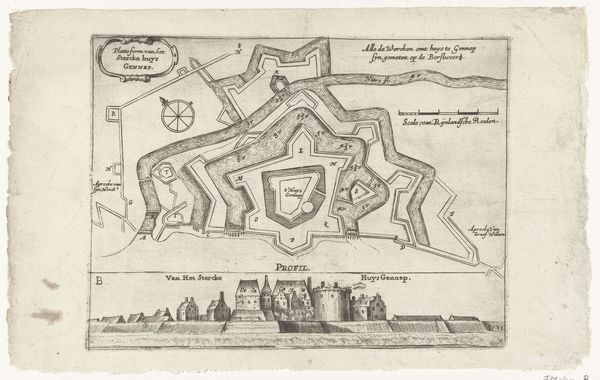
graphic-art, print, engraving
#
graphic-art
#
baroque
#
dutch-golden-age
# print
#
landscape
#
perspective
#
geometric
#
line
#
cityscape
#
history-painting
#
engraving
Dimensions: height 210 mm, width 533 mm
Copyright: Rijks Museum: Open Domain
Curator: This detailed engraving from 1633, titled "Beleg van Maastricht, 1632 (plaat 5)," was created by Claes Jansz. Visscher. It currently resides at the Rijksmuseum. Editor: My initial reaction is how… geometric it all is. Like a series of miniature fortified puzzles laid out before us. The stark lines and the sheer number of these compartmentalized cities... It's a very controlled vision. Curator: Yes, that controlled vision reflects a fascination with spatial organization and defensive strategy that was characteristic of the Baroque period and Dutch Golden Age. Notice the meticulous lines employed; how they describe both the natural landscapes and the man-made fortifications. It reminds us how closely intertwined nature and human endeavor became at this time. Editor: It makes me consider the physical act of engraving itself, though. To carve these precise representations, mirroring the precise engineering they depict… what kind of labor was involved in reproducing these sites in this manner? The material context interests me – what were these prints used for? How did this affect their value as source documents? Curator: Precisely, it served a documentary function and, at the time, as propaganda. Images like this conveyed the strength and strategic brilliance of military campaigns. Geometric forms had strong associations with order, reason, and thus the ability of humans to dominate territory through both arms and technological progress. These prints circulated news. But look at the placement of symbolic forms -- the way settlements are integrated within broader landscape patterns. These create narrative pathways that also appeal to memory and collective cultural values regarding conquest. Editor: It strikes me that the success of any army then would lie with skilled men with good quality paper, ink, and the right tools to disseminate tactical information efficiently across great distances. You know, as an affordable piece of reproducible media in comparison to say...tapestries depicting noble victories. And the value then also falls to us in studying labor dynamics as impacted by political messaging through inexpensive mediums such as these. Curator: Agreed. Thinking about it, both interpretations align—how the dissemination of imagery reinforces specific ideals is critical to understand the deep cultural impact it had. It brings together so much in how it captures a precise moment. Editor: I'd add to that. How the materials allowed this vision to materialize adds another equally profound layer to unpack the complex relations during wartime that images such as these tell!
Comments
No comments
Be the first to comment and join the conversation on the ultimate creative platform.
